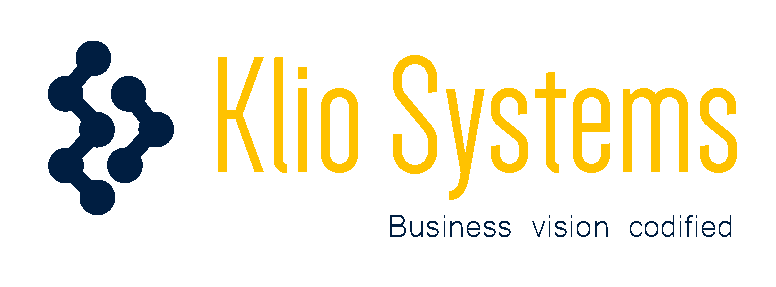Selecting a Firewall for your Small Business
For starters, What is a Firewall? Since you are here reading this article, I suspect you have been told you need a firewall. So, what is a firewall? A Firewall is an appliance or equipment that secures an internal network, allowing internal users to connect to the Internet while restricting access to internal resources from any external users. Moreover,
Why Firewalls are needed
You might be wondering if you even need a firewall for your workspace. To determine this, let’s go over the purpose of firewalls. Firewalls prove to be useful when incrementing your organization’s security. Firewalls secure private networks by filtering traffic and preventing outside users from accessing vulnerable data. As technology advances, new vulnerabilities can be found against organizations. It is important to keep up with potential, advanced cyber-attacks.
Being compliant
Now that I explained the use of Firewalls in general terms, I want to mention a Firewall’s role from a Business standpoint. For this, I’ll use small businesses as an example. Now, small businesses usually handle customer payments, especially credit card transactions. If businesses accept credit cards as a payment method, it is important for them to be PCI compliant. PCI compliance, also known as Payment Card Industry Data Security Standard, refers to a set of requirements for businesses that handle credit card transactions. The purpose of PCI compliance is for online transactions to be processed securely and protect customers from identity theft. Maintaining a secure network is an essential element when aiming for PCI compliance.
Features Firewalls should have
It can be overwhelming to surf the web for simple results only to find various Firewalls and having to compare among them. To make the search easier, I decided to include a section on a vital question for finding the appropriate Firewall: What features should Firewalls have? As everything else, cyber-attacks evolve overtime. Here, I will focus on required features that the latest Firewalls should have implemented in order to keep up with and combat the latest cyber-attacks.
Antivirus
Although Antivirus and Firewall both serve to protect networks from harm, there are differences between them. While a Firewall serves as a barrier between a private network and public web users, the Antivirus feature protects a user’s workstation from viruses and other malware. Overall, the inclusion of Antivirus feature within a Firewall protects a user’s work environment from potential threats.
Routing
While a Firewall works to block external traffic from a private network, Routing is the process of how certain traffic streams within a network. Moreover, Routing establishes internal network communications, executes an addressing structure that recognizes each device, and arranges devices into a classified network. The Routing feature within a Firewall allows organizations to maintain secure connections within their private networks.
VPN
A Virtual Private Network can be defined as a secure, private connection between a user’s device and an endpoint. VPNs encrypt and transmit data while it shifts from one site to another on the Internet. In general, there are two type of VPN connections: Remote Access VPN and Site-to-Site VPN. Remote Access VPN connection is common for staff working away from their office and need to connect to their organization’s private network. This type of connection is fitting for small to mid-sized organizations. In contrast, Site-to-Site VPN connections securely connect two or more networks. This type of connection is suitable for large organizations that have branch offices and want to protect any data interaction among them.
VLAN
A Virtual Local Area Network (VLAN) can be defined as a subnetwork -within an existing Local Area Network (LAN)- specified for a particular group of devices to connect and maintain their traffic apart from other subnetworks. In an organization, multiple VLANs can be assigned to different departments for better Network performance. Rather than having a single network with crowded traffic, departments can have their own traffic and control over user accessibility to confidential data. This feature is convenient for reducing broadcast traffic and latency on a Network, and it would be easier to detect and enforce policies against potential intruders.
Content Filtering
Content Filtering is a feature that blocks access to certain websites on the Internet. Organizations can apply Content Filtering to enforce company policies and prevent users from accessing certain websites during work hours. The process involves defining unwanted content patterns to be matched and if so, such unwanted control patterns are blocked. This feature can prevent security risk for organizations by keeping malicious sites away.
Sandboxing
A Sandbox is a security approach for keeping suspicious programs separate from important system resources and other programs. In the Sandbox environment, such programs are run and investigated before being passed through a firewall and then into a network. This feature provides an additional tier of security to organizations by stopping malware or suspicious programs from harming an organization’s system.
Unified Security Management
Today’s networks seem larger than before due to the inclusion of mobile and IoT (Internet of Things) devices, and cloud deployments. In effect, organizations must constantly keep track of their expanding networks. A Firewall’s Unified Security Management functions as a single source for deployment, monitoring and configuring within an organization’s network. Moreover, through the USM feature, organizations can manage and apply security policies across their network environment simply and productively. This feature allows organizations to bear with their growing attack surface and reduce its cyber risk.
Threat Prevention
As mentioned earlier, cyber-attacks evolve from time to time and so should an organization’s cyber security approach. A firewall with an integrated Threat Prevention feature identifies and blocks cyber-attacks. For organizations to reduce potential cyber-attacks and their effects, Firewalls with Threat Prevention included are fundamental to an organization’s cyber security.
Application and Identity-Based Inspection
Integration of application use and staff depth within organizations contribute to the expansion of networks today. With the increasing use of applications within work environments, Firewalls with the Application Inspection feature allow organizations to detect applications that trigger certain traffic streams and apply application-specific policies to such traffic. Depending on an application’s utility, organizations can either manage, block, or adjust applications they find fitting or disrupting to their work environment. Also, organizations with large staff tend to assign certain roles and accessibility to their workers. For security purposes, it is important to ensure that actual staff members access their organization network. Firewalls with the Identity-Based Inspection allow for organizations to create policies and enforcement on user identity.
Hybrid Cloud Support
Another influence for today’s expanding networks is the increasing use of cloud computing. Nowadays, many organizations are shifting over to hybrid cloud deployment, a system that links a user’s “private cloud” with a third party “public cloud”, allowing for all security settings to be configured from a single source. Next-Generation Firewalls integrate hybrid cloud support for simple Deployment and Scalability. It is imperative for organizations to consistently apply security policies across their cloud-based environments.
Scalable Performance
As mentioned above, organizations are now opting for cloud-based environments mainly for Scalability and Flexibility offered. Such capabilities provide benefits to a user’s cloud-based environment. But what about a user’s on-premise environment? Could it be improved? The answer for that is Hyperscale- the ability of an architecture to scale appropriately as increased demand is added to a user’s system. Next-Generation Firewalls support Hyperscale for Integration and Supplying of additional resources in a user’s computing environment. This feature is essential for organizations to have a strong and scalable distributed system.
Are they expensive?
So, how much does a Firewall device cost? As any other device, the price varies depending on the model and its features. If you read our “Firewalls that we recommend” article, you’ll read more about different Firewall devices and how they differ from one another. Keep in mind that certain Firewall devices may be suitable for businesses depending on their environment. Firewall devices suitable for small businesses tend to range from $100.00 to $500.00; $1,000.00 to $5,000.00 is an approximate range for Firewall devices for medium-sized businesses; and for large businesses or enterprises, the estimated price ranges up to $25,000.00 or higher.
Some firewalls we like
As you consider acquiring a Firewall device, you can continue reading our “Firewalls we recommend” blog for further information. Firewalls are available through different manufacturers and models. Depending on a user’s environment, certain Firewalls may be more suitable than others. In the “Firewalls we recommend” blog, I’ll be reviewing the following Firewall devices:
- USG Ubiquiti
- Fortinet 30E
- Cisco ASA 5506-X
Klio Systems, Inc. is a technology company focused on software engineering, digital presence, managed IT services and security practices company.

